That Useful Wine Site
Search, or just roll your cursor over the colored boxes farther below.click the “x” to dismiss Search-results block.
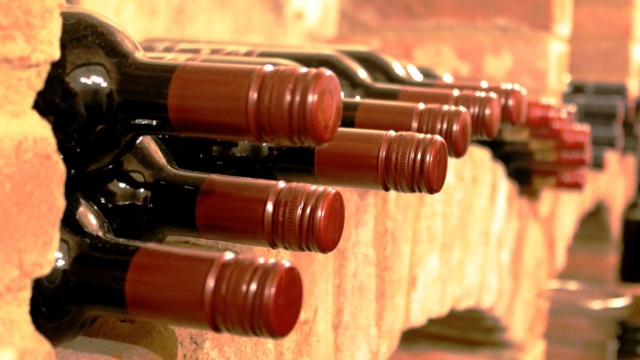
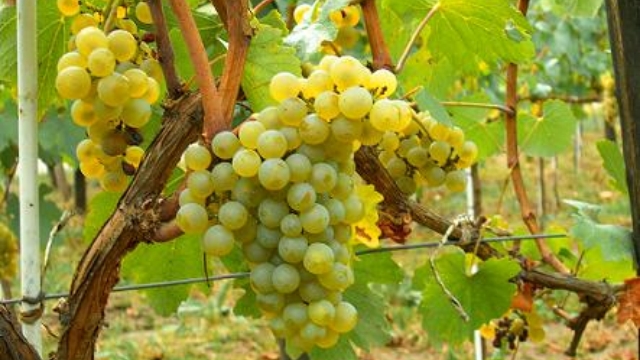
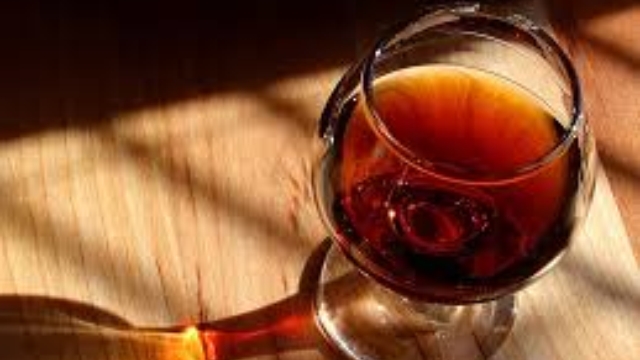
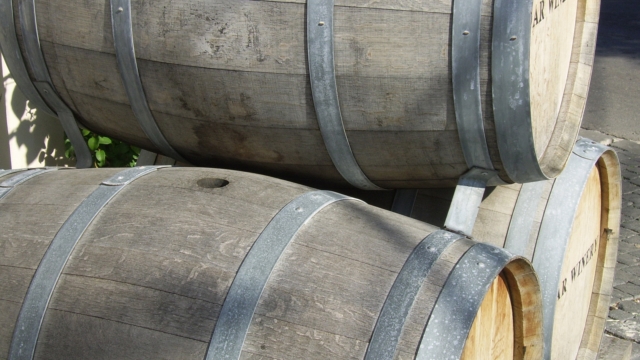
Advertisement:
Advertisement:
Quick page jumps:
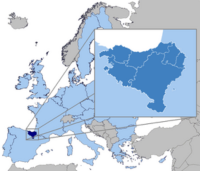
Txakolina is an exception to the way this site is organized, which is normally by grape type; we considered various ways to address the topic, but amalgamating it all under this one umbrella seemed the most satisfactory (or, to be honest, least unsatisfactory).
The difficulty arises from Txakolina being a rather distinctive wine type, but one that can be made of any or several of a collection of unrelated grape types. What Txakolina wines—which can be white (nowadays the most common), rosé, or red (formerly the regional norm)—have in common is a distinctively high acidity, fairly low alcohol content, light body, moderate to pronounced pétillance (effervescence), decided minerality, and (usually) strong flavors. It is a type quite specific to its origins in Basque country, though today there is also a very small amount produced in Chile.
The nomenclature associated with Txakolina wines can get complex, and touchy: the latter because there are strong feelings about the differences between native Basque renditions of terms and the Spanish renditions of those terms (that applies to far more than just wines, and derives from the centuries-long friction between the Basque community and the government of Spain, which at times has sought to erode native Basque traditions and language). And that isn’t all: even in the laws regulating the three DO (Denominación de Origen) Txakolina regions, the name of the most notable wine grape is spelled (all in Basque, mind) in three different ways. We will try to cut across most of this needless complexity and address the wines themselves, but will try to use the varietal-name spellings appropriate to the DO in which that type dominates.
(Those wanting to look further into these topics are referred to these useful and interesting web pages: Warren Edwardes’ “Wine Spice”; Fringe Wines’ write-up on Hondarrabi Zuri; and Wikipedia’s article on Basques.)
Note also that Txokalina itself is often rendered instead as just “Txakoli” (don’t ask); apparently either form will do.
First, what are the wines that can go into a Txakolina? The foremost these days is a white grape that DNA evidence says is identical to the Courbu Blanc grape of France; note that that is not the same grape as the more famed Petit Courbu of Gascony, but it is said that wines from the Courbu Blanc are quite similar to those from Petit Courbu. The Basque version is called by slightly differing names in each of the three Txakolina DOs; it is variously “Hondarrabi Zuri” (in the Getariako Txakolina DO), “Hondarribi Zuri” (in the de Álava Txakolina DO), and “Ondarrabi Zuri” in the Bizkaiko Txakolina DO). And just to ice the cake, Zuri is also often spelled as “Zurri” (or even sometimes “Zuria”). Many online sources do not use these various forms in accordance with their true provenance, so you may expect to find any spelling whatever in an article on Txakolina wines.
The wines from this grape are described as pale yellow with aromas of citrus fruit, ripe fruit, herbs, and flowers. Txakolina wines that are 100% Hondarrabi Zuri can readily be found, as well as blends starring the type. Note that though the grape is usually styled as just presented, technically it is “Hondarrabi Zuri Zalla”; the Petit Courbu grape is, in Basque nomenclature, “Hondarrabi Zuri Zerratia”. Taking notes?
Another important grape type, and the only one that seems to be unique to the Basque region, is the red-wine grape Hondarrabi Beltza (aka Ondarrabi Beltza). Despite the name similarities, this grape is quite unrelated to the white grape Hondarribi Zuri. The variously spelled Hondarrabi/Ondarrabi is a jumbling of the name of a small town in the region, Fuenterrabia (in Basque, “Hondarribia”, which means “sand ford”) on the Bidasoa River, which is very near the border between Spain and France. And Zuri is just Basque for “white”, while Beltza is Basque for “black”. See? Not so arcane after all. At any rate, Hondarrabi Beltza makes all the red Txakolina, is the informing grape in rosé (rosado) Txakolina wines, and can even be found in small amounts in some white Txakolina wines. Like the other grapes used in Txakolina wines, it is marked by assertive acidity. Its flavor tends markedly toward strawberry and perhaps even more raspberry (well suiting it for rosadas).
In sum, the various grape types one may find in a Txakolina include:
Hondarrabi Zuri {Zalla} (Courbu Blanc)
Hondarrabi Beltza (unique)
Hondarrabi Zuri Zerratia (Petit Courbu)
Izkiriota (Gros Manseng)
Izkiriota Ttipia (Petit Manseng)
Txori Mahatsa (Sauvignon Blanc)
Mune Mahatsa (Folle Blanche)
Possibly you are not yet confused enough. So, let us present the “authorized” wine-grape data for Txakolina wines for each of the three defined DOs (with links to the source pages):
Broadly speaking, the takeaway from all this is that Txakolina is a very interesting and usually delightful class of wines, good on their own or with food. Many sites, even the official ones, tend to minimize the class, referring to them as “simple”—apéritif wines or “summer wines”—but the best of them have more than enough character to be taken seriously, and to go with foods of all sorts.

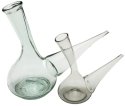
By law (meaning some makers might be cheating), Txakolina is never artificially carbonated: the residual carbon dioxide gas from fermentation is simply retained in the bottling. Some few Txakolina wines are made as still wines, but most deliberately preserve the effervescent quality.
Factoid: Txakolina wines are served, in what purports to be an old ritual form, by being poured into the glass from a substantial height, from a foot or so up to four feet or thereabouts (depending on the server’s sense of showmanship); a special bottle (a porron) is often used. The process supposedly augments the pétillance of the wine (though it seems to us that it would also augment spillage and waste).
Despite the showmanship, one writer dryly notes that “If you visit the vineyards there, vintners will show how the Basques drink the popular wine, pouring it from a height into flat-bottomed tumblers. This aerates the wine and gives it the slightest prickly fizz, making it even more refreshing. The key is to pour it from 10 to 12 inches above the glass, not more, so you get a little bit of foam, but not too much.” Or as a retailer puts it, “This has more to do with aerating very rustic, reduced wine served off lees direct from casks behind the bar, and has little relevance to filtered, bottled wines.”
One last note: it surpasses understanding why so many wine writers whine (however playfully) about the supposed impossibility of ever pronouncing the Basque wine names. Most of the “problem” dissipates when once one grasps the simple fact that “x” is used to represent the sound “ch” as pronounced in English “cheer”. The occasional use of a “t” before it is almost immaterial: the difference between “cha” and “tcha”, if there is any such difference. There: wasn’t that easy?
Now that Txakolina wines are suddenly fashionable in the U.S., prices have elevated correspondingly: these are no longer “cheap” wines, though they are still reasonable in an absolute sense. We repeat that the frequent dismissive descriptions of these wines as “simple” does them an injustice: not a few are as “complex” as many substantially more “respected” wine types, and are certainly as pleasing.
The Txakolina market nowadays is mostly white, but we have also included a red; once upon a time, before Txakoil were “discovered”, the stuff the locals drank was almost all red; but now, for the market it’s almost all whites being made. But, from the literature, it looks like you are not likely to go far wrong with any Txakolina you might find, so don’t hesitate to experiment.
• This wine’s Wine Searcher “Reviews” page.
• This wine’s CellarTracker review pages.
• Retail offers of this wine listed by Wine Searcher.
• Retail offers of this wine listed by 1000 Corks.
• This wine’s Wine Searcher “Reviews” page.
• This wine’s CellarTracker review pages.
• Retail offers of this wine listed by Wine Searcher.
• Retail offers of this wine listed by 1000 Corks.
• This wine’s Wine Searcher “Reviews” page.
• This wine’s CellarTracker review pages.
• Retail offers of this wine listed by Wine Searcher.
• Retail offers of this wine listed by 1000 Corks.
• This wine’s Wine Searcher “Reviews” page.
• This wine’s CellarTracker review pages.
• Retail offers of this wine listed by Wine Searcher.
• Retail offers of this wine listed by 1000 Corks.
• This wine’s Wine Searcher “Reviews” page.
• This wine’s CellarTracker review pages.
• Retail offers of this wine listed by Wine Searcher.
• Retail offers of this wine listed by 1000 Corks.
There are no Txakolinas better enought than those listed above to be worth a “splurge” price.
Advertisement:
Advertisement:
|
|
This site is one of The Owlcroft Company family of web sites. Please click on the link (or the owl) to see a menu of our other diverse user-friendly, helpful sites. |
|
| (Note: All Owlcroft systems run on Ubuntu Linux and we heartily recommend it to everyone—click on the link for more information). | ||
|
All content copyright © 2024 The Owlcroft Company
(excepting quoted material, which is believed to be Fair Use). |
This web page is strictly compliant with the W3C (World Wide Web Consortium) Extensible HyperText Markup Language (XHTML) Protocol v1.0 (Transitional) and the W3C Cascading Style Sheets (CSS) Protocol v3 — because we care about interoperability. Click on the logos below to test us!
This page was last modified on Saturday, 30 October 2021, at 11:26 pm Pacific Time.
Some Descriptions of Txakolina Wines
“[A] family of slightly sparkling, very dry wines with high acidity and low alcohol content produced in the Spanish provinces of the Basque Country, Cantabria and northern Burgos…They are normally served as aperitifs and drunk within one year of bottling as they cannot be stored for longer. The most common variety, white, has a pale green colour, but there are red and rosé varieties.”
“The fresh, lightly fizzy wine made in the Getaria region of northern Spain – the appellation is Getariako Txakolina – is the most familiar expression, but other Txakolinas are made as well, all worth exploring. In the neighboring appellation of Bizkaiko Txakolina, centered on Bilbao, the wines are less fizzy and a bit fuller and rounder. Bizkaiko Txakolina has many variations, even a little bit of delicious red…A third, tiny appellation, Arabako Txakolina, was established in 2003 in the inland region around Álava…[T]he grapes are hand-harvested and delivered to the winery, where they are immediately chilled down nearly to freezing and blanketed with nitrogen, an inert gas that prevents oxidation, a process that preserves freshness, juiciness and tangy acidity. The wines are then fermented with native yeasts in steel tanks, also kept cold and blanketed to capture carbon dioxide, which accounts for the fizziness. The carbonation is entirely natural, though it is widely suspected that less scrupulous Txakolina producers illegally inject their wines with carbon dioxide.”
“In general Txakoli is clean, high in acid, and has a great deal of minerality and salinity, making it perfectly refreshing to sip with seafood, cured meats, and hard cheeses like the Basque-made sheep’s milk cheese idiazabal. It’s a knockout with fried snacks as well, and since it’s low in alcohol, this wine is ideal for sipping all afternoon (and all night) over plate after plate of tapas.”
“Txakolí is typically light-colored, with a slightly green tinge and tiny little bubbles that stream to the top of the glass. Its flavor holds a slightly herbaceous and citric quality that I find exceptionally refreshing among white summer wines. The indigenous Spanish grapes Hondarribi Zuria and Hondarribi Beltza are the main varieties, giving Txakolí its particularly refreshing acidity and kick. There is a slight variety in styles depending on where in the Txakolina region the wine comes from (central wines are rounder; coastal wines are zestier), but they are all essentially refreshing bottles that pair well with most foods.”
“That means fresh, sometimes even tart whites, often bottled with a little spritz, and much rarer but similarly lean reds…The wines still retain that green apple and lemon snap, and often still a little CO2. They are served locally in chunky tumblers just as they always were, but quality has risen steeply.”
“This wine is straightforward and uncomplicated. It has a refreshing style with fruit-dominated characters, and can have a slight sparkle as well as high acidity.”
“Color: Almost clear and spritzy with small bubbles because they ferment the wine under really cold temperatures and wind up with a blanket of carbon dioxide over it that makes it fizzy. Smell: Fresh, like flowers, unripe peaches, and light apple. It smelled like a waterfall and then had a spicy warm rock smell to it too (if you’ve been hiking, imagine sitting on a rock face in the sun – that spicy rock smell is what this was like). Taste: Like sucking on a salted lemon. It was very tart with high acid and it tasted like lemon salt water. The wine was spritzy and reminded me of a more tart version of Vinho Verde.”
“Die-hard red wine drinkers, though, are often at a disadvantage [in the summer], casting around for something – anything – to slake their thirst. If anyone’s asking, I might steer them toward Spain and a crisp, bone-dry, slightly saline Txakoli (a.k.a. Txakolina) from the Basque country on the northern coast of Spain. And since Txakoli is generally low in alcohol, it’s the perfect summer wine.”
“The wines have been characterized as the ideal summer sippers, but are also perfect for the colder months and holiday time. Gentle effervescence suggests the celebratory vibe of bubbly, low alcohol means you can sip throughout the length of a party without getting sloppy and razor-sharp acidity is a great pairing for a good many finger foods, from hard cheeses to raw oysters to salty, deep-fried bites. I keep calling the wines “fizzy” because this is the style I like best: dry, mineral to the point of being nearly salty, zesty and laced with tiny, fleeting bubbles (they disappear if you let your txakoli sit out too long – which is why small, frequent pours is how this wine should be served). This fizzy, saline, high-acidity style is best associated with Getaria, the smallest subregion of txakoli-producing Basque Country. The other two regions, Bizkaia and Alava, make a slightly lusher, rounder txakoli. A few wineries even make red txakoli.”
“At their best these wines can be as scintillating, refreshing and bracing as a walk along the seashore. They are light-bodied, have high acidity and tend to be light in alcohol, around 10.5%-11%, with green apple characters and even a trace of a salty tang and a slight spritz that makes them wonderful as an aperitif or with a salad, seafood and virtually any alfresco meal including, traditionally olives and anchovies.”